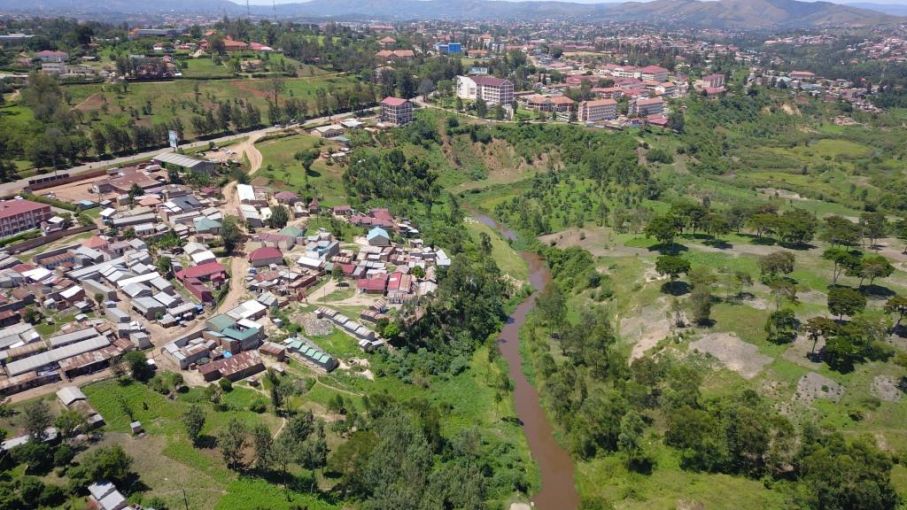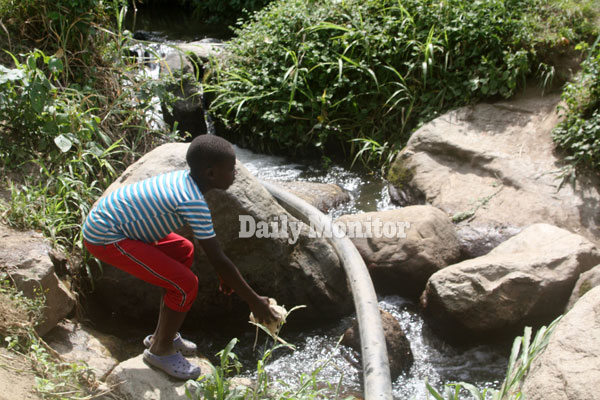
Young girls are getting pregnant. Domestic violence is on the rise. These are just some of the effects of the Covid-19 pandemic and its restrictions in an area where water is scarce, says Mr Kikora Masereka, of Kyahwire zone, Karangura Sub County in Kabarole District of Western Uganda.
“The challenges we have got during the lockdown due to Covid-19 is increased pregnancy due to young girls walking long distances to fetch water at far water sources,” Masereka said.
“Previously men and women have been fetching the water, but now due to schools’ closure, parents send their children to water sources and boys have taken advantage of that,” he adds.
“We are now starting a dry season (June to August); we are going to face a lot of challenges of domestic violence because of long queues at water sources. It will force women who fetch water more than men to delay at water sources. And usually men think that they were not at the water sources but had gone for other men,” he added.
Mr Chris Tumuranzye, the LCI chairperson for Kyahwire zone, says he is facing a lot of challenges leading a community that is water-stressed amid the dangers of Covid-19.
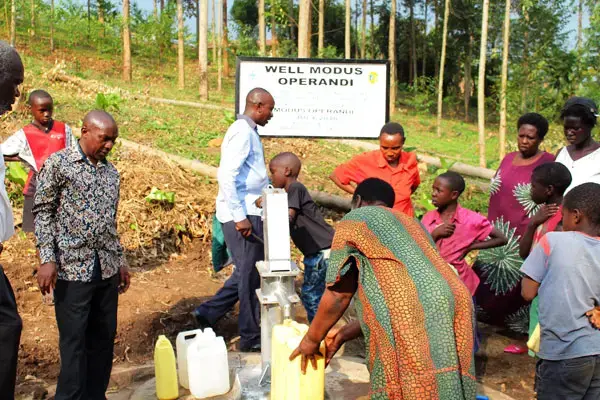
He said more than 6,000 residents in the area scramble for water at two sources that serve four zones. Others who are scared of the crowds and queues are forced to walk over one and half kilometers to fetch water from River Mpanga, he says.
“The government tells us to stay at home, but we have to walk to water sources where there are no sanitizers at the taps,” Kikora Masereka, a resident says.
People are forced to crowd at boreholes and shallow wells thereby no social distancing is observed at all, a basic requirement to slow the spread of Covid-19.
Karangura with a population of 12,368 is the source of River Mpanga that snakes through Kabarole, Fort Portal City, Kyenjojo, Kamwenge and Kitagwenda districts before it empties into Lake George. The upstream part of the river is highly contaminated. Lake George connects to Lake Edward through the 40-kilometer Kazinga channel and Lake Edward is connected to Lake Albert through River Semuliki before they connect to River Nile.
“We have a gravity flow scheme that supplies only two wells that serve four zones; Kazingo (Bukuuku sub county), Katuuru (Mugusu sub county), Katuuru Upper (Karangura) and Kyahwire (Karangura). There is always a scramble for water at these sources; kids are beaten; this has created bad blood between women as they fight due to the long queues, so we want government to avail us more water sources,” says Tumuranzye, the LC I Chairman for Kyahwire zone.
He adds, “We have tried to teach the people of this area to avoid Covid-19 by using clean water for drinking, water at their toilets, washing hands all the time and to wear face masks, but it is a challenge amid a water crisis.”
Mr Vincent Mugumya, a resident of Karangura, says the people in his area have no safe water for consumption since their water is either stagnant or originating from shallow open wells.
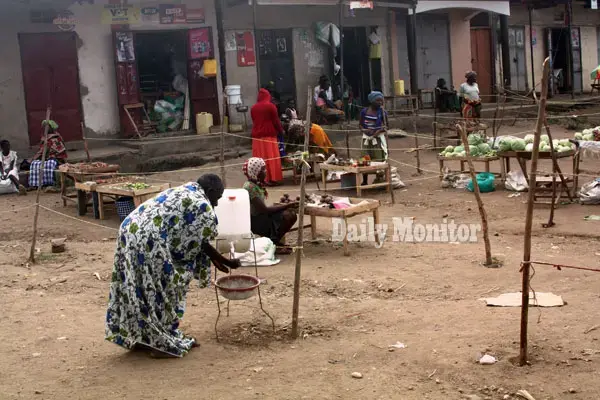
“In the hills it is very rocky, while in lower areas the water table is high, so people dig very shallow latrines and faeces mix with water, which means the people downstream drink contaminated water,” Mugumya says.
Contamination of water sources
Ms Maureen Kajumba, the acting sub county chief of Karangura, says the issue has been worsened by the widespread trend of open defecation.
“Most families spend the whole day up in the hills in their shambas digging from morning to evening and even have their breakfast and lunch from there so what do you expect after eating?” she says. “In the gardens there are no toilets and they dig very far away from their homes, so when it rains, the floods and landslides sweep the waste in the river and other water sources.”
She says managing hygiene and sanitation is also worsened by the topography of the area, a mountainous region with six rivers and their tributaries.
“When it rains, all the faeces and waste is washed into the rivers,” she says. “Despite using enforcement and sensitisation by NGOs like NRDI, Protos and Hewasa, people’s attitude is still poor to hygiene and sanitation,” she observes.
Kajumba is worried that human activities in Karangura are contaminating the rest of the region downstream.
“All the gravity flow schemes are contaminated and I am scared that since Karangura feeds the entire region because the source of river Mpanga is here, it is not only us who are going to be affected but the entire population of Kabarole district downstream” she says.
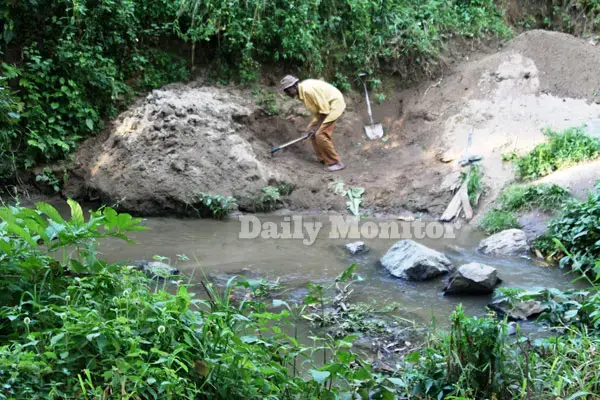
Mr Mwesige Fenehansi, the LC I chairperson for Nyarukanga village in Karangura, is trying to address the problem by mobilizing all LC I chairpersons to organise all households in the sub-county in groups of 10 model households, which will begin communal cleanup of each home including setting up standard latrines. But the long-standing issue of water scarcity has multiple competing causes in the region that will require a comprehensive approach from many stakeholders, district leaders said.
There have been only two cases of Covid-19 thus far; the patients were admitted at Fort Portal regional referral hospital. The first patient, a 29-year-old truck driver, tested positive for coronavirus on May 8, 2020 and was later discharged in June after testing negative, according to Dr. Solomon Mugarura, the head of Covid-19 team at Fort Portal Regional Referral Hospital.
The second Covid-19 patient was admitted at the same hospital on June 20 from Bwera Hospital in Kasese. He is a Ugandan who was sent back from DR Congo authorities.
So far no case from the communities has been reported in the region.
Ms Olive Tumuhairwe, the District Health Inspector for Kabarole district, says Karangura has about 79 per cent latrine coverage, but less than 10 per cent have improved sanitation facilities, which are safe and clean facilities.
“The sanitation and hygiene coverage in this area is not so good, because we have a majority of the structures which are temporary and those that compromise the environment and the water safety,” Tumuhairwe says.
According to Kabarole District Wash Master Plan 2018-2030, access to water services is low (58 per cent) and is less than the national average estimated at 70 per cent at the time.
The district master plan indicated that there is a high level of contamination of drinking water sources (64 per cent) especially in rural areas. This compromises the quality of water for domestic use.
The adoption of hand washing with soap at household level is very low, and less than 10 per cent of households had improved sanitation facilities with hand washing facilities with water and soap.
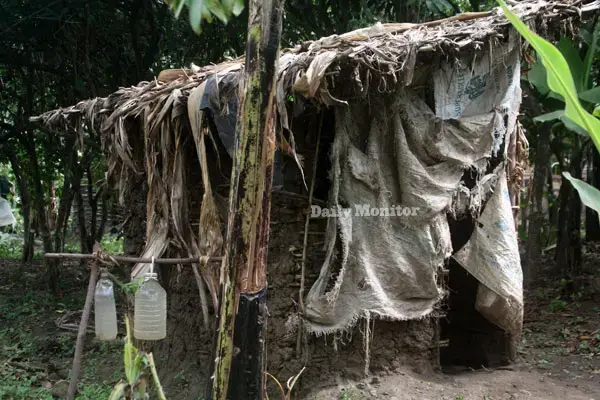
Since hand washing is key to stay the spread of Covid-19 pandemic, there is a high chance of the communities becoming infected with Covid-19 if community transmission begins in the region.
Geological challenges
According to the district chairman, Mr Richard Rwabuhinga, loamy soils composed mainly of sand and silt with a small amount of clay have made it impossible for engineers to build Water Sanitation and Hygiene (WASH) structures. These soils make up about 70 per cent of the district, and have caused the district to lose lots of money in latrines that collapse.
Tumuhairwe says that in Harugongo sub county, pozzolana rocks made up of volcanic material have also made it hard to dig pit latrines.
The high water table in areas such as Karago town council, Karangura and Bukuuku also make constructing latrines difficult, since the waste can easily enter into the groundwater or run into rivers and streams when they flood, Tumuhairwe says. A water table is the level at which underground soil and gravel is completely saturated with water. The water table is generally higher in areas with high density soil related to clay content.
Mr Chris Amanyire, a Field Officer with Natural Resources Defense Initiatives (NRDI) says to solve the issues of sanitation in areas with a high water table, they are promoting eco-san toilets.
Ecosan toilets work without water, separating urine from faeces and allowing waste to be recycled by turning the waste into compost or liquid fertiliser, which can be used to fertilise soil or crops.
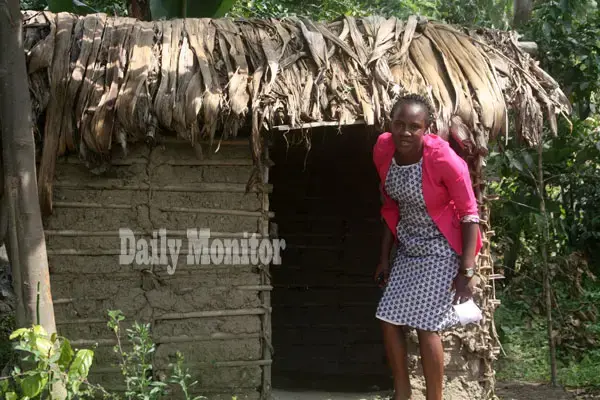
“We just open the surface and start construction… The household contributes Shs700,000 and NRDI pays the balance of Shs2.3 million” Amanyire says. NRDI also runs a community project of planting trees along River Mpanga and provides free seedlings to the community.
Ms Rita Kiteme,a social scientist with the Ministry of Water and Environment, says that issues identified in Karangura include a high level of erosion because of the gradient of hilly areas.
“This has caused siltation of the river due to human activities cultivating close to River Mpanga, so Albert Water Management Zone focused at homes in Karangura because it is the upstream of River Mpanga,” she says.
The ministry has done some community trainings of technologies that could minimise issues of erosion such as constructing rain water harvesting trenches and formulating contours where the gradients are very steep.
“After two years, [National Water and Sewerage Corporation] NWSC in Fort Portal has been able to report that the water is a bit better,” she says.
Water treatment at NWSC plant in Fort Portal had tripled in the previous years, as they used more chemicals to purify the water of contamination, according to the NWSC Fort Portal branch manager, Mr Denis Muramuzi.
Muramuzi says it is at times very expensive for them to filter the polluted water from River Mpanga because it requires a lot of chemicals.
“Between 2010 to 2016, the chemical consumption at NWSC Fort Portal plant increased by 3.1 times from 0.0120 Kg/unit of water to 0.0375 Kg/unit of water treated,” he says. “It is all due to the increasing pollution levels on River Mpanga which serves as our source of raw water supplying Fort Portal and Kabarole District,” he adds.
NWSC has over 10,000 water connections (households) in Fort Portal city alone and at times consumers complain of the chocolate colour of the tap water pumped into their homes especially during the rainy season due to the contamination upstream.
Community attitude
Ms Lydia Mutiibwa, a Senior Environment Health Officer with the Ministry of Water and Environment attached to rural water and sanitation in Western region, says that the residents of Karangura have a big challenge of washing hands despite knowing the dangers and being taught what to do.
“Here people have been taught to wash hands but you find someone has a toilet but no water or some have water without soap, some have soap but no water yet hand washing in totality stops most diseases including coronavirus. You find five out the 20 households we visited were able to do proper hand washing; the rest know the importance of hand washing, but behavioural change is wanting so they don’t practice it,” she says.
The district health inspector Tumuhairwe says the district has been holding a community awareness campaign throughout the whole of last year to improve hygiene and sanitation in the area.
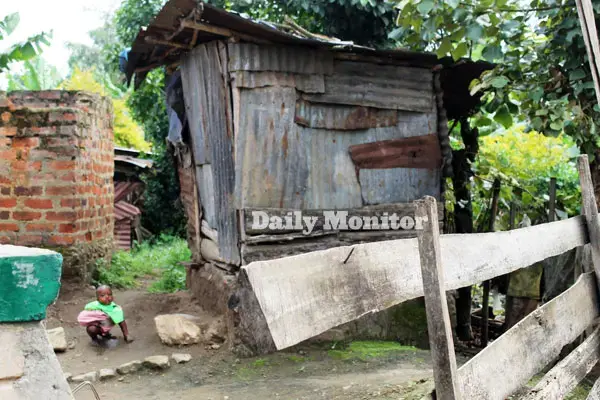
Water coverage in Kabarole District
According to the Kabarole District water officer, Mr Bruno Basude, the status of water supply, sanitation and hygiene promotion (2018/19), water coverage was 80 per cent while functionality of water sources was at 88 per cent, functionality of water committees 41 per cent and latrine coverage at 81 per cent.
Hand washing facilities at household level were at 28 per cent in 2018/19, hand washing facilities at schools at 14 per cent, pupil: stance ratio at 65:1, household sanitation at 85 per cent, about 171 (35 per cent) villages without a water source and 323 villages (65 per cent) with a water source.
The waterborne toilets account for only one per cent of the facilities.
According to the Water Supply Atlas, the access rates in Kabarole vary from 7 per cent in Kijura Town council to 95 per cent in Bukuuku Sub-County. Kabarole has 1,137 domestic water points which serve a total of 258,053 people – 178,127 in rural areas. About 207 water points have been non-functional for over five years and are considered abandoned. Kabarole has three piped schemes.
This story was produced in partnership with InfoNile with support from Code for Africa and funding from the Pulitzer Center and National Geographic Society.
COVID-19 Update: The connection between local and global issues–the Pulitzer Center's long standing mantra–has, sadly, never been more evident. We are uniquely positioned to serve the journalists, news media organizations, schools, and universities we partner with by continuing to advance our core mission: enabling great journalism and education about underreported and systemic issues that resonate now–and continue to have relevance in times ahead. We believe that this is a moment for decisive action. Learn more about the steps we are taking.


